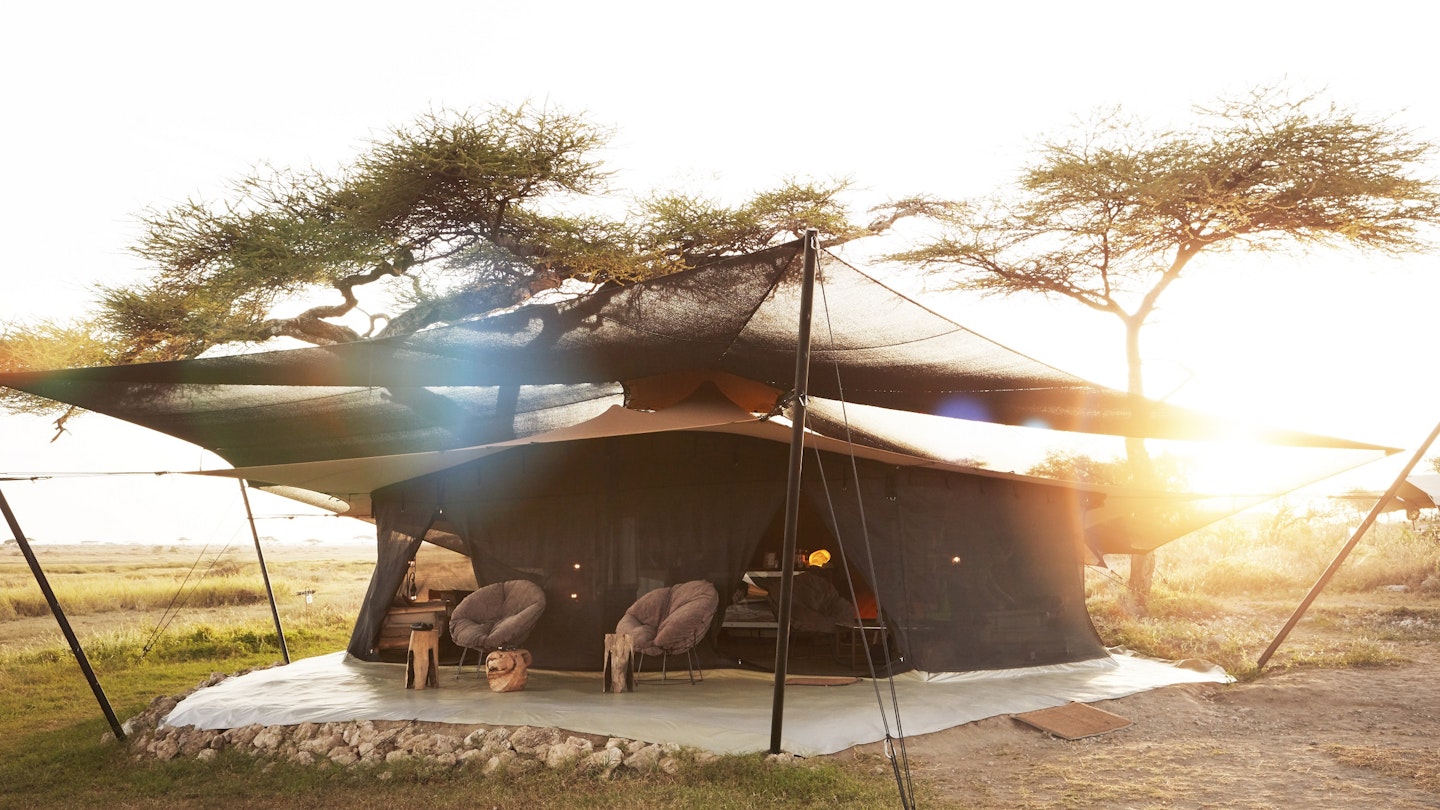If you’ve never before been on safari, one of the great pleasures of travelling in Africa awaits. If you’re lucky, you’ll spend your days tracking down one species of charismatic megafauna after another, from elephants and rhinos to big cats, buffaloes and giraffes. However, what does a typical day on safari really involve?
Although experiences will vary depending on your budget and the type of accommodation—whether you’re camping, sleeping in lodges, or glamping under canvas in a luxury tented safari camp—some elements remain constant. Here’s what to expect.
Morning
Most days on safari begin before dawn. While watching the sunrise in Africa is reason enough to rise early, you’re also up early because the first two hours of daylight are the best times to see wildlife. In the cool of early morning, most animals are out and about and active, even some of the nocturnal species such as hyena. However, there should be no need for an alarm clock; on most safaris, a camp attendant will wake you with a quiet African voice coming from the darkness. Sometimes you’ll be served tea and coffee in your tent, with light breakfast snacks available in the camp’s communal areas while everyone assembles.

As close to dawn as possible, you’ll be on the trail of wildlife, most often in an open-sided safari vehicle with tiered seating. The norm is that you’ll share these vehicles with other guests, although private vehicles cost extra. However, they’re rarely crowded. The better camps provide blankets, since mornings can be unexpectedly chilly! Sometimes called ‘game drives’ in nod to the past, wildlife drives can last for two hours or even twice that, depending on wildlife sightings. Guides and drivers often communicate over the radio to ensure all guests see the same wildlife whenever possible.

4WD vehicles are the most common ways to explore, though walking safaris may be possible if you’re in a private conservancy. However, outside of Zambia, Zimbabwe, and South Africa, walking options are rarely allowed in national parks. Boat excursions are another possibility in some areas, such as dugout canoe trips in the Okavango Delta, Canadian-style canoes on the Zambezi, or powered sightseeing boats in Botswana’s Chobe National Park.
The Heat of the Day
On most days, you’ll return to camp by mid to late morning. A more substantial breakfast or brunch usually follows, and this is often accompanied by some downtime. Have a siesta, laze by the pool if there is one, or simply find a vantage point to contemplate the beauty of wild Africa. If your safari includes a visit to a local village or other excursions, it will most likely occur around this time.

Afternoon tea, sometimes called high tea, is an old safari tradition, served around mid-afternoon. The offerings can vary from camp to camp but you’ll rarely leave hungry, as high-quality cuisine becomes increasingly part of the safari camp experience.

Late Afternoon & Evening
As the heat of the day fades, you’ll leave camp for another wildlife drive (or walk, or boat excursion). These usually last for a couple of hours and will pause at a scenic spot for what’s known as the ‘Sundowner’, another cherished safari tradition. Enjoying a drink of your choice while watching the sunset over a waterhole or acacia-framed savannah is pure bliss.

If you’re visiting a national park, you’ll need to return before sunset. However, if you’re in a private or community-run conservancy, there are fewer restrictions about driving after dark. Consequently, you might return to camp later and have the opportunity to spot nocturnal species using an animal-friendly spotlight. Night drives can reveal rarities such as aardwolves, civets, and aardvarks, opening up a whole world of possibilities. Furthermore, these conservancies often allow drivers to go off-road in search of wildlife.
Whenever you arrive back in camp, you’ll have time to freshen up and change for dinner. In more luxurious lodges and camps, you may dress for dinner as you would in a fine restaurant. However, in many cases, a change of clothes is more about comfort than formality. Before and after dinner, the main meal of the day in most camps, there’s generally an open fire where you can enjoy your evening drink, gaze into the flames, or converse with other guests. Some camps may even host a pre-dinner lecture by a naturalist or provide cultural entertainment.
When it’s time to head to your tent or room, a camp attendant will likely escort you with a torch to ensure you don’t encounter any wildlife, such as elephants or lions, that may be nearby at night. Then, as the lights go out, you’ll drift off to sleep amidst the chorus of nighttime sounds in Africa.





